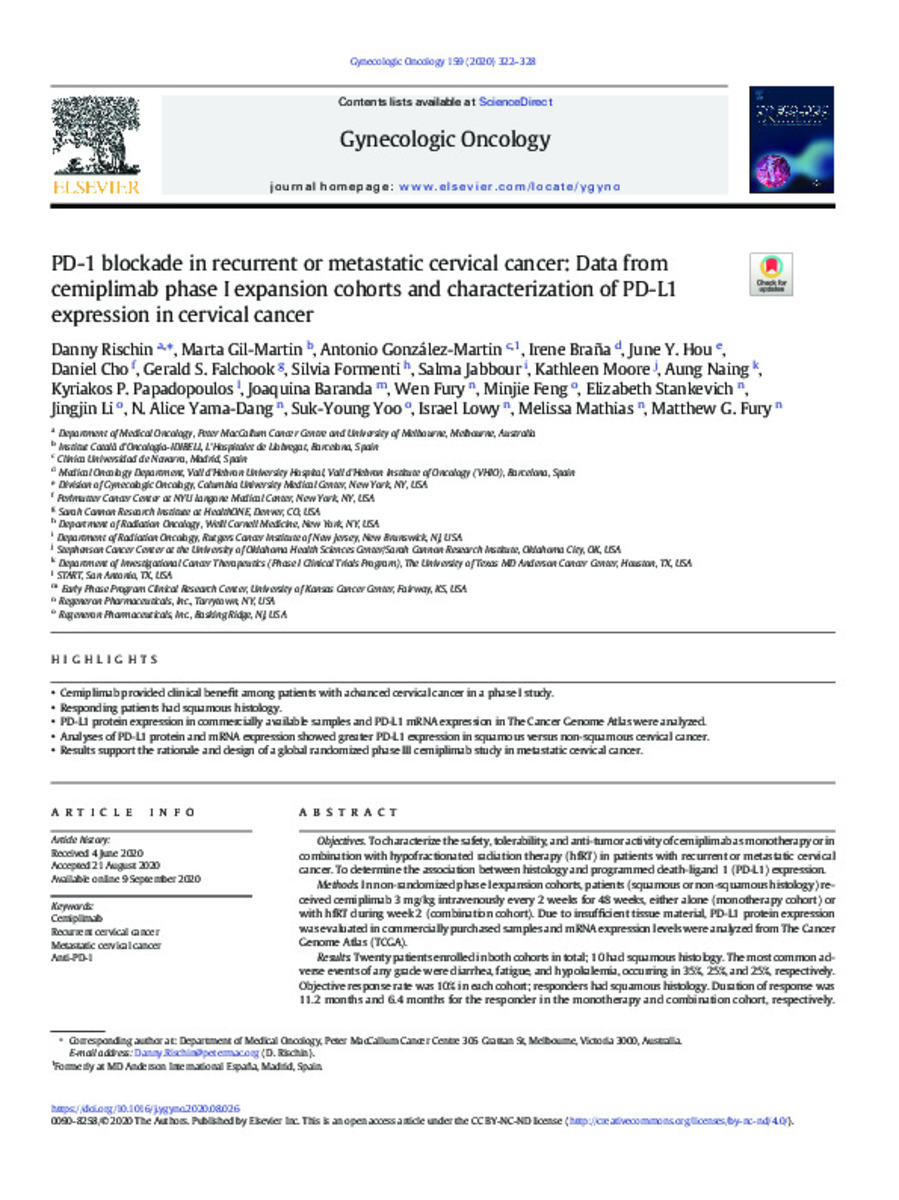PD-1 blockade in recurrent or metastatic cervical cancer: Data from cemiplimab phase I expansion cohorts and characterization of PD-L1 expression in cervical cancer
Palabras clave :
Cemiplimab
Recurrent cervical cancer
Metastatic cervical cancer
Anti-PD-1
Fecha de publicación :
2020
Nota:
This is an open access article under the CC BY-NC-ND license (http://creativecommons.org/licenses/by-nc-nd/4.0/).
Cita:
Rischin, D. (Danny); Gil-Martin, M. (Marta); González-Martín, A. (Antonio); et al. "PD-1 blockade in recurrent or metastatic cervical cancer: Data from cemiplimab phase I expansion cohorts and characterization of PD-L1 expression in cervical cancer". Gynecologic Oncology. 159 (2), 2020, 322 - 328
Aparece en las colecciones:
Estadísticas e impacto
0 citas en

0 citas en

Los ítems de Dadun están protegidos por copyright, con todos los derechos reservados, a menos que se indique lo contrario.







